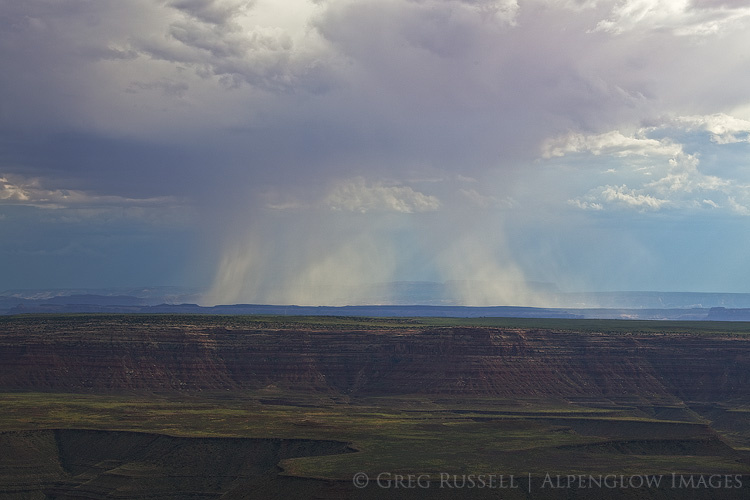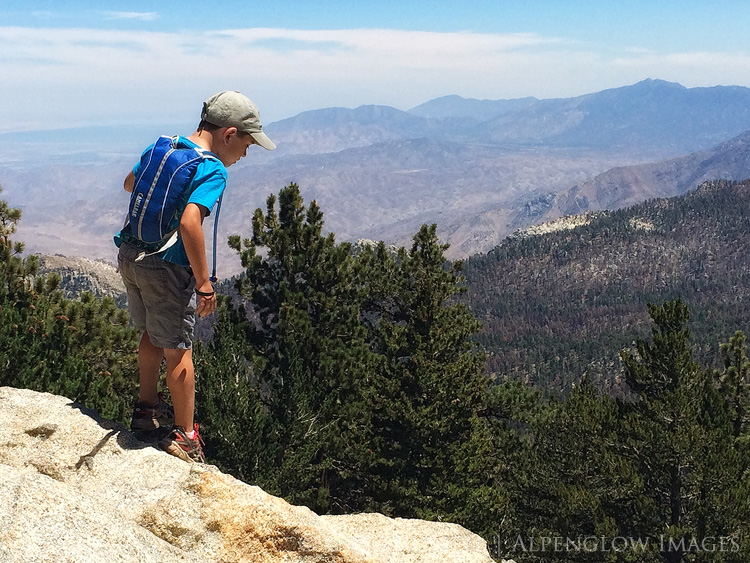In early July, I made it home to the Four Corners region of the Southwest to visit my parents. Although I haven’t lived there in close to two decades, I use the word home to describe it because that’s how it feels–no matter how long I’ve been gone, it always feels like I haven’t left. Perhaps this isn’t a good thing, implying things about a lack of progress, etc., but I prefer to think that feeling is due to an intangible familiarity that is coded in our DNA. Safe, familiar, known–space becomes place.
As I usually try to do on my visits home, I visited the Cedar Mesa area of southern Utah. Driving across the unassuming highway that crosses the Grand Gulch Plateau, I was reminded of the many backpacking trips I took there when I was younger. My friends and I climbed the ledges of the canyons, busted through the willows, and–yes–explored the numerous Ancestral Puebloan ruins in hands-on style. While we were never destructive, we certainly never hesitated to climb inside, living in our own fantasies of what the lives of these people must have been like, completely oblivious to the historical context of the sites.
Last week, I took my seven-year-old son backpacking in our local mountains here in southern California. After driving home from New Mexico, he wanted a “short car ride,” and I was happy to oblige. The San Jacintos have really wonderful Sierra Nevada-esque piles of granite boulders, and after arriving at our campsite for the day, he was content to play in these makeshift forts, but of course from a seven year-old’s perspective, a fort can always be improved on.
After a few hours of playing, he asked for help moving a huge number of logs and deadfall into a particular area to create a wall. My first reaction was that moving that wood would violate Leave No Trace principles, and I caught myself starting to redirect his attention towards something less impactful for future visitors. But then I looked around: impact abounded around us. Visitors from the weekend had left a 5-gallon bucket of water, there was trash in the next door. One weekend’s crowds leave, another’s roll in. I happily picked up my first log and put it where I was directed–this was going to be a wall that could stop Hannibal and his elephants.
After getting home, I read an article that perfectly echoed my sentiments from that evening in the San Jacintos. Environmental education (for kids especially) has almost gone so far as to turn kids off from nature. As the author of the article says, kids need to be untutored savages in nature for just a while in order to appreciate it, treasure it. My afternoon of asking my son to appreciate being outside went completely unheard; after building the wall together, he asked if we could live in the mountains for the rest of the summer. All it took was 20 minutes.
Back to Cedar Mesa, and my childhood years running rampant through its canyons. Today we know the area was colonized at least twice by Ancestral Puebloans, and it is incredibly rich with archaeological sites. Some of them are well known and can be reached easily (like the sites I visited as a kid), but others are more remote, their locations are more guarded to prevent looting and just to keep them from being “loved to death.” Today, I feel incredibly connected to this place–probably more so than anywhere on earth–but if you had tried telling the twelve-year-old me the area’s history, I would have tuned out for sure. Looking back, I feel like I needed to be an untutored savage on those backpacking trips to have the appreciation I do for the place today.
The timing of my recent trips and this article are serendipitous, and it does seem like certain things intersect in our lives at opportune times. Understanding the nature of nature education is research that needs to be done; instilling a notion of the inherent value of the land in our children needs to be done now, and with urgency. This is especially true on Cedar Mesa.
Given my years of running freely there, I admittedly have some internal conflict about it, but I can’t help but feel the area needs more protection. Some pockets–like Natural Bridges National Monument–are protected, but the area at large is managed loosely by the Bureau of Land Management, and the oversight is minimal. The “guarded” archaeological sites I mentioned are becoming less so by the day with GPS coordinates popping up here and there on the internet, putting them at risk for looting (which is shockingly rampant) or simply being “loved to death.” Add these threats to the area’s cultural history to potential development, and we are forced to ask at what point we impose stricter rules via protection. It’s never an easy issue on public lands.
This recent article from the High Country News summarizes the groups involved in Cedar Mesa’s protection and the compromises being made on that long journey.
“One final paragraph of advice: do not burn yourselves out. Be as I am – a reluctant enthusiast….a part-time crusader, a half-hearted fanatic. Save the other half of yourselves and your lives for pleasure and adventure. It is not enough to fight for the land; it is even more important to enjoy it. While you can. While it’s still here. So get out there and hunt and fish and mess around with your friends, ramble out yonder and explore the forests, climb the mountains, bag the peaks, run the rivers, breathe deep of that yet sweet and lucid air, sit quietly for a while and contemplate the precious stillness, the lovely, mysterious, and awesome space. Enjoy yourselves, keep your brain in your head and your head firmly attached to the body, the body active and alive, and I promise you this much; I promise you this one sweet victory over our enemies, over those desk-bound men and women with their hearts in a safe deposit box, and their eyes hypnotized by desk calculators. I promise you this; You will outlive the bastards.” — Edward Abbey



I very much agree that there’s a danger in following the “take only photos, leave only footprints” ethic exclusively, though there are times and places where it’s appropriate. Every outdoor pursuit, backpacking, peakbagging, photography, mushrooming, rockhounding, hunting, fishing – hell, even ranching, logging or prospecting – gives you a different knowledge of and relationship with the landscape. It’s vital to conduct these activities ethically, but losing those different ways of interaction and their attendant knowledge is indeed a loss. Our local ranch manager sees things in the land that I am oblivious to, and her relationship is probably deeper, since she has far more skin in the game. I’m skeptical that enough people can cultivate a purely aesthetic or spiritual relationship with the landscape, at least at the beginning. And for kids it’s even more the case. My very outdoorsy son responds far better to hikes with real interactivity than he does to impressive views. My own outdoor activities are largely of the Leave No Trace, aesthetic appreciation variety, but I often wonder if I’m not shortchanging myself by neglecting to embrace some more direct means of connection with the landcape.
Hi, Jackson, thanks for your thoughtful comment. Of course this blog post comes on the tail end of a few brief emails you and I exchanged earlier in the week about the region, and I appreciate your thoughts here too.
I couldn’t agree more about every outdoor pursuit having ties to the land. Some hunting groups (like the Rocky Mountain Elk Foundation) give big research dollars to help maintain a healthy ecosystem, and for good reason–if the ecosystem dies, so do the elk (or deer, or turkey, or…), so there’s a vested interest there, and I also feel that ranchers are in the same boat, and do have more skin in the game, so to speak.
I think that this idea of people from different backgrounds/pursuits all having a vested interest in what happens to the land is pretty common. But to me, finding compromises such that we maintain not only outdoor recreation, but everything else, is really core to the Western ethos.
Granted, in a good compromise, no one gets everything they want, but I do like the idea of it. 🙂